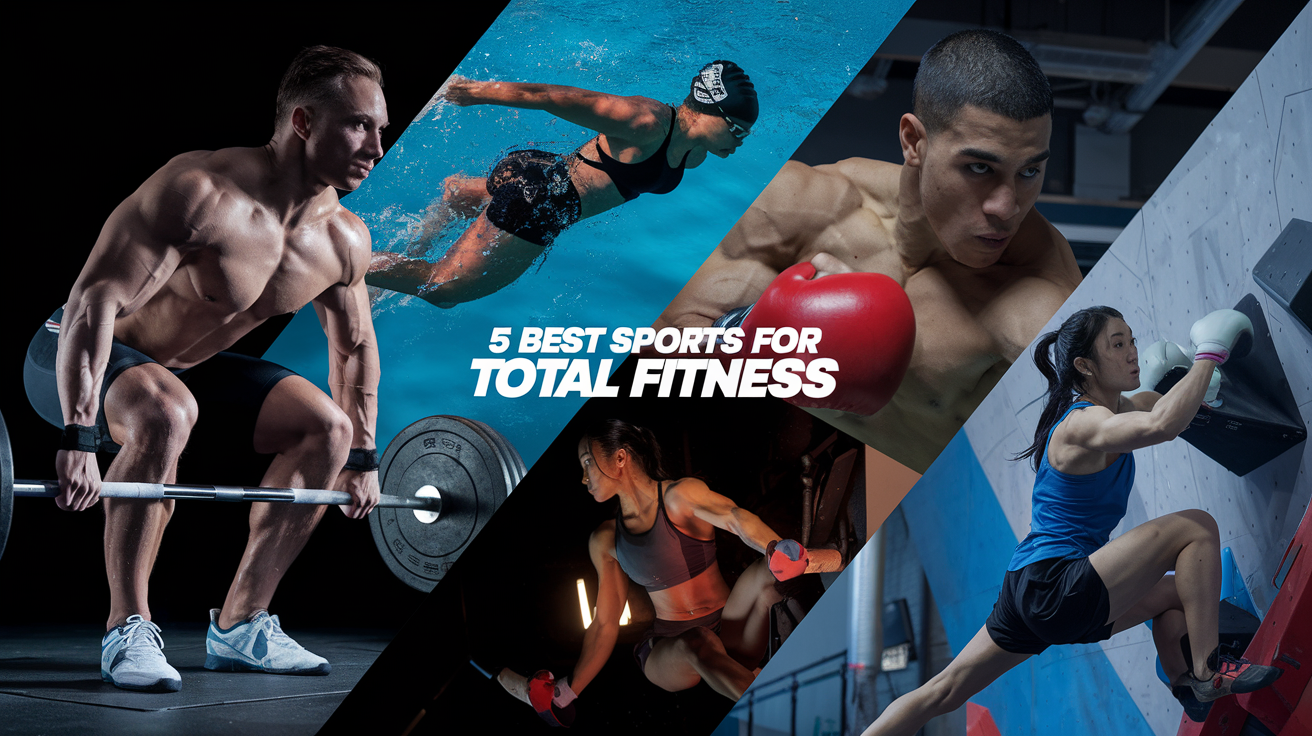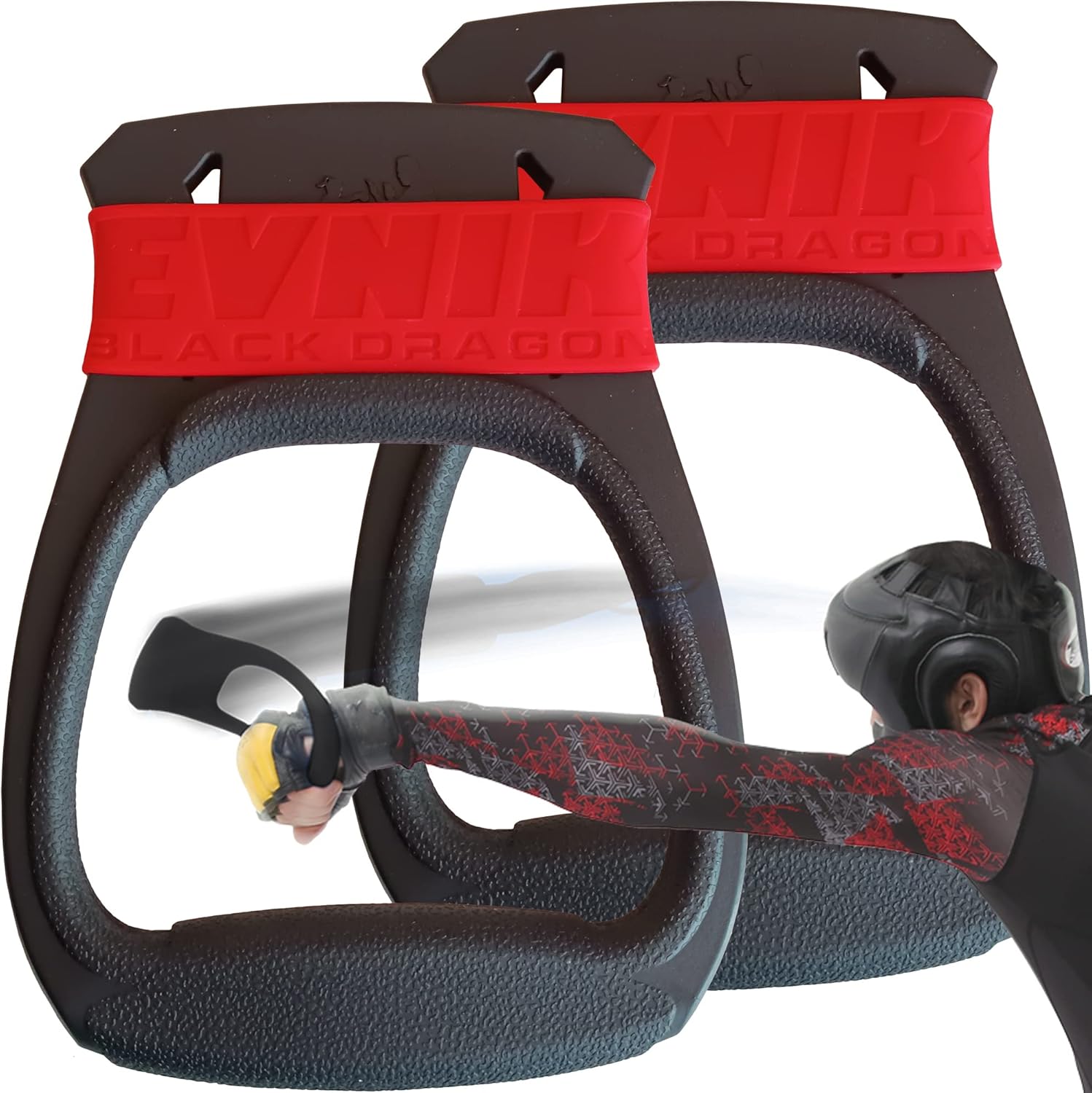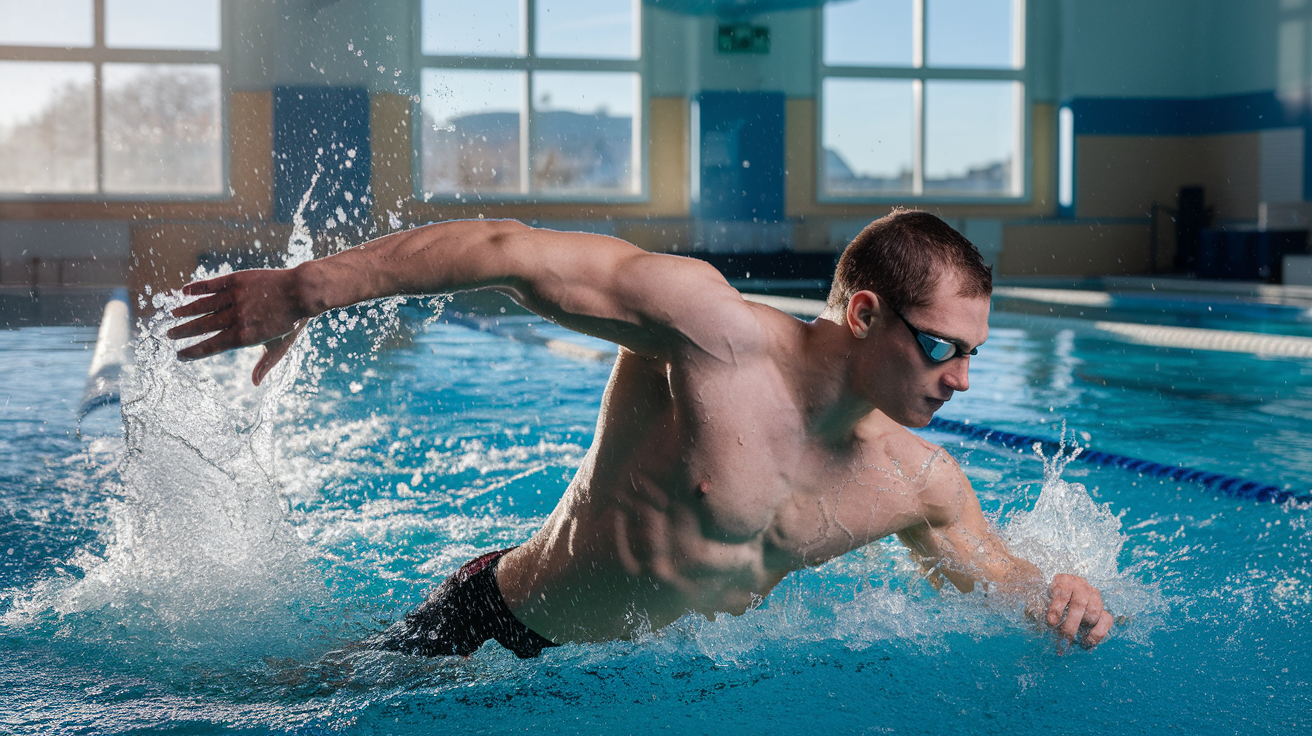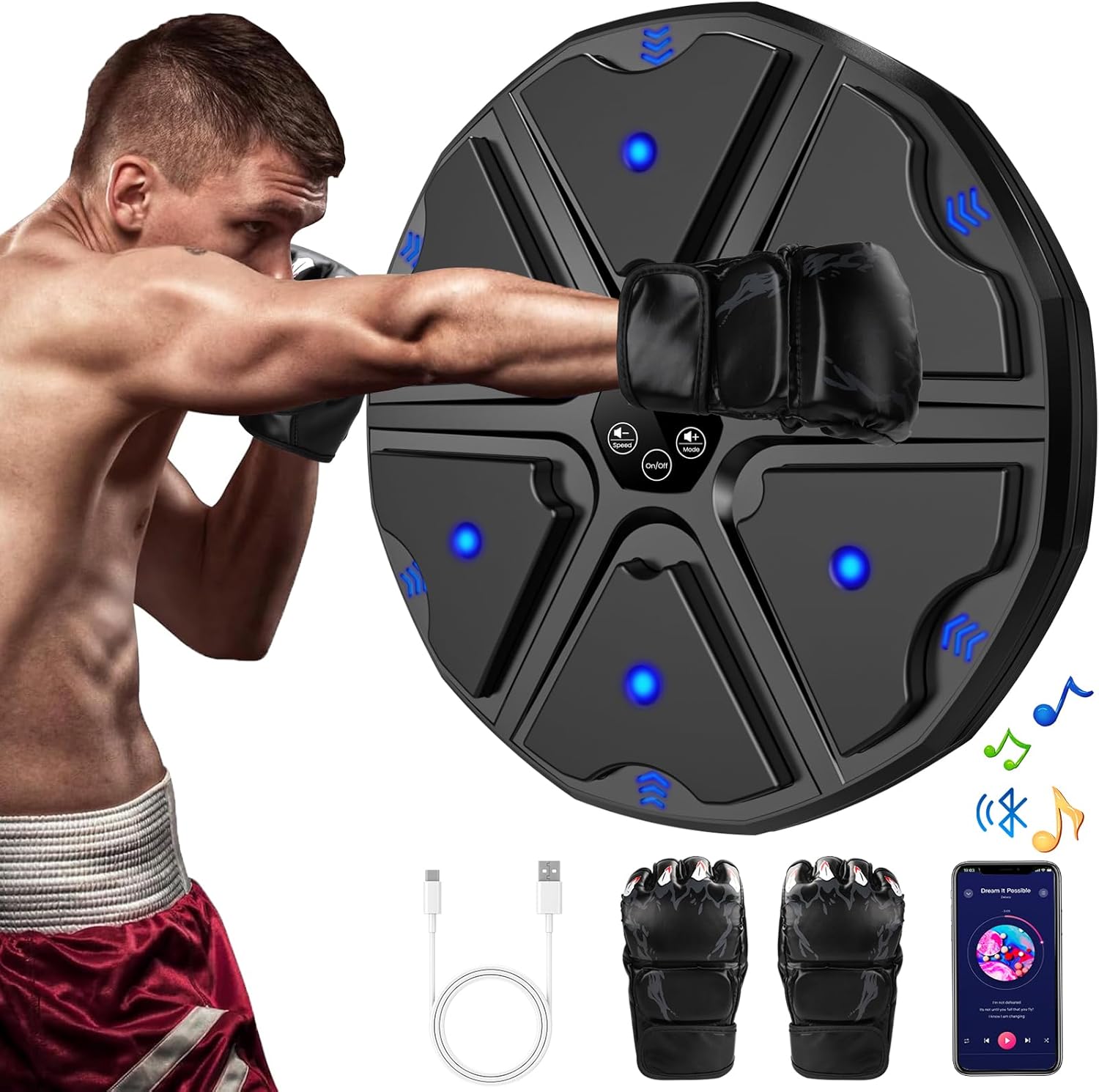
Let’s be real—70% of people who start a fitness program at the gym quit within the first 30 days. Maybe you’re nodding your head right now because that was you last January.
The problem isn’t you. It’s that nobody told you which sports actually deliver results while being enjoyable enough to stick with.
Finding the right sports for fitness and strength doesn’t have to be an endless cycle of gym memberships and abandoned equipment gathering dust in your garage.
What if I told you the perfect workout for your body type might not even feel like exercise? The five sports we’re about to dive into range from surprisingly accessible to downright addictive. But first, let me explain why the sport you probably think is #1 actually isn’t…
Why These Five Sports Stand Out for Total Body Development

The Science Behind Effective Fitness Training
Not all workouts are created equal. The five sports we’ve highlighted stand out because they trigger what exercise physiologists call “compound adaptations” – your body responds by improving multiple systems simultaneously.
When you box or swim, you’re not just building muscle. Your heart gets stronger, your lungs increase capacity, and your nervous system learns to fire more efficiently. This multi-system training effect is why these activities deliver results faster than isolated exercises.
Research published in the Journal of Strength and Conditioning Research found that activities requiring whole-body movements stimulate more growth hormone and testosterone release than isolated exercises. This hormonal response is literally your body’s natural performance enhancer.
And here’s something cool – these sports create what experts call “neurogenic muscle tension,” which builds strength without necessarily bulking you up. Perfect if you want functional fitness rather than just looking good at the beach.
How Strength and Cardiovascular Health Work Together
Think of your body as an engine. Cardiovascular fitness is your fuel efficiency, while strength is your horsepower. You need both.
When you improve cardiovascular health through boxing or swimming, you’re actually enhancing your strength training capacity too. Better circulation means:
- Faster delivery of nutrients to muscles
- More efficient removal of waste products
- Quicker recovery between strength sessions
- Higher training volume capability
The synergy works both ways. Stronger muscles support cardiovascular performance by:
- Improving posture and body mechanics
- Creating more efficient movement patterns
- Reducing injury risk during extended cardio sessions
- Boosting metabolic rate even when resting
This symbiotic relationship explains why cross-training (mixing strength and cardio) produces better results than focusing exclusively on one aspect.
Measuring Fitness Improvement: What to Track
Tracking progress motivates you and ensures you’re moving in the right direction. For each sport, focus on these key metrics:
Performance Markers:
- Boxing: Punch output per round, sustained power
- Swimming: Lap times, distance without fatigue
- Climbing: Grade progression, hold difficulty
- Tennis: Rally length, court coverage
- CrossFit: WOD completion times, weight progression
Physiological Markers:
- Resting heart rate (should decrease as fitness improves)
- Heart rate recovery (how quickly you return to baseline after exertion)
- Body composition (ratio of muscle to fat, not just weight)
- Sleep quality (improved recovery indicates better fitness)
The most telling metric? Consistency. Track how many sessions you complete each week. Nothing predicts success better than showing up regularly.
Don’t obsess over daily fluctuations. Look for trends over 4-6 week periods. Your body adapts in waves, not straight lines. Sometimes you’ll plateau before making another jump forward.
Weightlifting: Building Raw Power and Functional Strength

Key Compound Movements for Maximum Muscle Growth
Want to get seriously strong? You need to focus on the big lifts that hit multiple muscle groups at once. These compound movements give you the most bang for your buck:
- Squats: The king of all exercises. They build your entire lower body while engaging your core and even your upper back.
- Deadlifts: Nothing builds raw power like picking heavy stuff off the floor. Your posterior chain will thank you.
- Bench Press: The classic upper body builder that targets chest, shoulders, and triceps.
- Overhead Press: Builds boulder shoulders and core stability like nothing else.
- Pull-ups/Rows: Essential for balanced development and a strong back.
What makes these moves so effective? They trigger a massive hormonal response, releasing growth hormone and testosterone that help build muscle throughout your entire body. Plus, they burn serious calories while mimicking real-world movements.
Progressive Overload: The Secret to Continuous Improvement
Your body adapts quickly. Lift the same weight for weeks on end and you’ll plateau faster than you can say “where are my gains?”
Progressive overload is simple but powerful: gradually increase the demands on your muscles over time. Here’s how to do it right:
- Add weight – The most straightforward approach. Even 2.5 pounds more each week adds up fast.
- Increase reps – Can’t add weight? Add an extra rep or two before leveling up.
- Decrease rest times – Less rest between sets = more work in the same time.
- Improve technique – Sometimes better form lets you lift more effectively.
- Increase training frequency – Hit muscle groups more often as you advance.
Track your workouts religiously. Nothing beats seeing those numbers climb over time for motivation.
How Weightlifting Improves Bone Density and Joint Health
Forget the myth that weightlifting ruins your joints. When done properly, it’s actually one of the best things you can do for your skeletal system.
The stress from lifting literally makes your bones stronger. Each time you lift, your body responds by increasing bone mineral density. This is crucial as we age – especially for women who face higher osteoporosis risk.
Your joints benefit too. Strong muscles provide better support and stability around joints. The controlled stress of weightlifting stimulates production of synovial fluid (your joint’s natural lubricant) and strengthens ligaments and tendons.
Studies show weightlifters have better joint health in the long run than people who avoid resistance training altogether. The key? Proper form, appropriate progression, and listening to your body.
Getting Started: Equipment and Form Basics
You don’t need a fancy gym to start. Here’s the bare minimum to get going:
- A quality barbell and weights
- Squat rack with safety pins
- Bench
- Flat shoes (Chuck Taylors work great)
Form is everything. Poor technique not only limits your gains but can lead to injury. Master these basics:
- Neutral spine – Learn to maintain proper back position in all lifts
- Bracing – Take a big breath and tighten your core before each lift
- Bar path – The most efficient route isn’t always straight up and down
- Range of motion – Full range builds more strength than partial reps
Don’t let ego dictate your weights. Start lighter than you think you need and focus on perfect form before adding load. Consider investing in a few sessions with a qualified coach – it’s worth every penny to build a solid foundation.
Swimming: The Ultimate Full-Body, Low-Impact Powerhouse

Why Swimming Builds Lean Muscle Without Joint Stress
Swimming stands out as the fitness unicorn we’ve all been searching for. You jump in the water and suddenly, you’re weightless. That 180-pound body? Now it feels like 18. This magical buoyancy means your joints get a much-needed break while your muscles do all the heavy lifting.
Water provides 12-14 times more resistance than air. Every pull, kick, and stroke becomes a resistance workout without the joint-crushing impact of land exercises. No wonder swimmers develop those distinctive V-shaped torsos and defined shoulders—they’re fighting against resistance in every direction.
And here’s the kicker: swimming engages nearly all major muscle groups simultaneously. Your core stabilizes, your arms pull, your legs kick, and your back muscles engage to maintain proper form. It’s like combining multiple gym machines into one fluid motion.
For people with joint issues, injuries, or those carrying extra weight, swimming offers a way to build strength without the pain that often accompanies traditional strength training. Your muscles work hard while your joints throw you a thank-you party.
Different Strokes for Different Fitness Goals
Not all swimming strokes are created equal. Each one targets specific muscle groups and offers unique benefits:
| Stroke | Primary Muscles | Fitness Benefits |
|---|---|---|
| Freestyle | Shoulders, lats, core | Overall conditioning, calorie burning |
| Backstroke | Back muscles, shoulders | Improved posture, back strength |
| Breaststroke | Chest, shoulders, inner thighs | Excellent for rehabilitation, stress reduction |
| Butterfly | Full body, especially core | Maximum calorie burn, power development |
Want better endurance? Freestyle swimming with longer, moderate-intensity sets will get you there. Looking to build explosive power? Short butterfly sprints might be your answer.
The beauty of swimming lies in its versatility. By changing your stroke, you effectively change your workout. It’s like having multiple gym routines available in one pool.
Building Respiratory Capacity and Endurance
Swimming forces you to control your breathing in ways that few other exercises do. Try maintaining a conversation while your face is underwater half the time—not happening!
This rhythmic breathing pattern, coordinated with movement, dramatically increases lung capacity over time. Swimmers develop larger lung volumes and more efficient oxygen usage. Your body learns to do more with less oxygen, which translates to better endurance in all physical activities.
Swimming also trains your heart to pump blood more efficiently. The horizontal position and water pressure actually help blood circulation, making your cardiovascular system work differently than during upright exercise.
The benefits spill over into everyday life too. Former swimmers often report less breathlessness during other activities and better recovery between exercise sets. Your everyday stairs suddenly feel less challenging when your respiratory system has been trained in the pool.
Swimming Workouts for Beginners to Advanced Athletes
Just starting out? No problem. The pool welcomes everyone:
Beginner Workout:
- 5 minutes easy freestyle swimming
- 5x50m with 30-second rest between each
- 5 minutes kicking with a kickboard
- 5x25m focusing on technique
- 5 minutes cool down
Intermediate Workout:
- 10-minute warm-up (mixed strokes)
- 8x100m alternating between fast and moderate pace
- 4x50m kick-only sprints
- 200m pull (legs-only buoy)
- 8x25m sprint efforts
- 5-minute cool down
Advanced Workout:
- 500m warm-up
- 10x100m pyramid (increasing pace every two laps)
- 400m IM (100m of each stroke)
- 8x50m at 85% effort with 15 seconds rest
- 4x25m all-out sprints
- 200m cool down
The pool doesn’t discriminate. Whether you’re a fitness newbie or Olympic-bound, there’s a swimming workout that’ll push your limits just right.
The Mental Health Benefits of Water-Based Exercise
Swimming isn’t just about physical transformation—it’s a mental game-changer too.
The repetitive nature of swimming creates a meditative state similar to running, but with an added sensory deprivation element. When your ears are underwater, the outside world literally fades away. It’s just you, your breath, and the rhythm of your strokes.
Many swimmers describe entering a “flow state” where time seems to stand still. Problems that seemed overwhelming on land often gain perspective in the water. The complete focus required prevents mind-wandering and worrying—it’s mindfulness in motion.
The water itself appears to have therapeutic properties. The gentle pressure against your skin provides a comforting, womb-like environment that many find calming. Add in the endorphin release from exercise, and you’ve got a potent stress-reliever.
Studies consistently show that regular swimmers report lower levels of stress, anxiety, and depression. For many, the pool becomes not just a place to work out, but a sanctuary for mental wellbeing.
Boxing: Explosive Power, Speed, and Mental Toughness

How Boxing Combines Cardio and Strength Training
Boxing isn’t just about throwing punches. It’s a full-body workout that hits the sweet spot between cardio and strength training. When you’re in the ring (or just working the bag), you’re constantly moving—bobbing, weaving, pivoting, and striking. Your heart rate stays elevated throughout, burning serious calories while building muscle.
A typical boxing session might have you switching between high-intensity punching combinations and recovery periods, creating a natural interval training effect. This approach is incredibly efficient at building both muscular endurance and cardiovascular fitness.
What makes boxing special is how it demands explosive power repeatedly. Throwing a proper punch engages your legs, core, and upper body in a coordinated chain of muscle activation. After just a few rounds, you’ll feel muscles you didn’t even know existed.
Core Strengthening Through Boxing Movements
Your core is command central in boxing. Every punch starts from the ground up, transferring power through your hips and core before reaching your fist.
The rotational movements in boxing—hooks, uppercuts, and body shots—particularly target the obliques and transverse abdominis. These aren’t muscles you typically hit with traditional crunches or sit-ups.
Boxing’s defensive moves are just as effective for core development. When you slip punches or duck under attacks, you’re essentially doing dynamic core exercises without even realizing it. The need to maintain balance while generating power creates constant tension in your midsection.
Most boxers develop that coveted “fighter’s physique” with defined abs and obliques without ever doing a traditional ab workout. The sport naturally sculpts your core as you master the techniques.
Speed and Coordination Development Benefits
Boxing demands lightning-fast reflexes and precise coordination. Your brain and body learn to work in perfect harmony as you develop these skills:
- Hand-eye coordination: Hitting moving targets or focus mitts
- Foot-hand coordination: Moving while punching effectively
- Spatial awareness: Understanding distance and timing
- Reaction time: Responding to incoming attacks
These skills transfer beautifully to other sports and daily activities. The more you box, the more your nervous system adapts, making movements that once seemed impossible become second nature.
The speed bag, in particular, develops rhythm, timing, and fast-twitch muscle fibers in your shoulders and arms. It’s like playing a musical instrument with your fists—challenging at first, but immensely satisfying once you get the hang of it.
The Psychological Edge: Focus and Stress Relief
Boxing isn’t just physical—it’s mental warfare. When you’re trading punches, your mind can’t wander to work deadlines or relationship problems. You’re fully present, focused on the moment. That’s why many people describe boxing as meditative despite its intensity.
The sport teaches you to stay calm under pressure. When you’re tired and someone’s trying to hit you, you develop mental toughness that carries over to everything else in life.
There’s also something primal and satisfying about hitting things. Bad day at work? Twenty minutes on the heavy bag will transform that negative energy into something productive. The endorphin release from high-intensity boxing workouts creates that coveted “fighter’s high” that can bust stress like few other activities.
Many boxers develop increased confidence that extends beyond the gym. Knowing you can defend yourself and push through physical challenges creates a quiet self-assurance that’s hard to match.
Rock Climbing: Functional Strength with Problem-Solving Benefits

Grip Strength and Upper Body Development
Ever noticed rock climbers’ forearms? They’re like Popeye’s after a spinach binge. That’s no accident.
Rock climbing absolutely crushes traditional gym workouts when it comes to developing functional upper body strength. Your fingers, hands, and forearms do the heavy lifting as they support your entire body weight on holds that sometimes feel smaller than a postage stamp.
What makes climbing unique is how it targets muscles you didn’t even know existed. Those tiny stabilizer muscles in your fingers and forearms? They’re getting a workout they’d never get from regular gym sessions.
Your back muscles – especially your lats and rhomboids – transform into powerful pulling engines. Every time you reach for the next hold, your shoulders engage in a full range of motion that builds mobility alongside strength.
And let’s talk about those biceps and triceps. Unlike isolated curls, climbing forces them to work together in complex movement patterns that translate to real-world strength.
Core Engagement and Balance Improvement
Your core isn’t just along for the ride when climbing – it’s the command center.
When you’re clinging to a wall with your toes perched on a tiny edge, your abs, obliques and lower back fire up to keep you from swinging away. This isn’t your standard plank hold – it’s dynamic core stabilization as you shift weight, twist, and reach.
The beautiful thing? This core engagement happens naturally without a single crunch or sit-up.
Balance improvement comes with the territory. Your body quickly learns to distribute weight efficiently, develop proprioception (that sixth sense of where your body is in space), and maintain stability when logic says you should be falling.
How Climbing Builds Mental Resilience
Climbing isn’t just physical – it’s a mind game.
Facing a difficult route (we climbers call them “problems” for a reason) forces you to push through mental barriers. That moment when your muscles are screaming but you’re still three moves from the top? That’s where mental toughness is forged.
The fear factor can’t be ignored either. Even with safety systems in place, your brain still registers heights as a threat. Learning to manage that fear – to acknowledge it without letting it control you – builds resilience that spills over into everyday life.
Problem-solving becomes second nature. Each climb presents a puzzle: “How do I get from here to there with the holds available?” You develop strategic thinking, learning to conserve energy and plan moves ahead.
The climbing community has a saying: “The best climber is the one having the most fun.” This mindset helps cultivate perseverance without perfectionism – a rare and valuable mental skill.
Indoor vs. Outdoor Climbing: Benefits of Each
Indoor climbing gyms have exploded in popularity, and for good reason:
| Indoor Climbing | Outdoor Climbing |
|---|---|
| Controlled environment | Natural beauty and adventure |
| Year-round accessibility | Seasonal dependence |
| Structured progression | Unpredictable challenges |
| Built-in community | Connection with nature |
| Cushioned floors for safety | Higher consequences, deeper focus |
Indoor gyms provide the perfect training ground for beginners. Routes (called “problems” for bouldering) are color-coded by difficulty, allowing clear progression as you improve. The social atmosphere makes finding climbing partners and mentors easy.
Outdoor climbing offers something no gym can match – adventure. The texture of real rock, the stunning settings, and the satisfaction of completing a natural line create memorable experiences beyond the physical workout.
Many climbers use indoor sessions for strength training and skill development, then apply those abilities outdoors when weather permits. This combination delivers both consistent progress and peak experiences that keep motivation high.

The five sports highlighted throughout this guide offer unique pathways to exceptional fitness and strength development. Weightlifting builds fundamental power while teaching proper body mechanics; swimming delivers a full-body workout without joint stress; boxing combines cardiovascular benefits with explosive power training; and rock climbing develops functional strength alongside mental resilience. Each sport provides distinct advantages that extend beyond physical improvements into mental toughness, problem-solving abilities, and lifelong fitness habits.
Whether you’re just beginning your fitness journey or looking to enhance your existing routine, consider incorporating one of these dynamic sports into your regimen. Start with the activity that most appeals to your interests and personal goals, then gradually increase intensity as your capabilities grow. Remember that consistency trumps intensity—regular participation in any of these sports will yield impressive strength gains and improved overall fitness that serves you well in everyday life.

This web is really easy to purchase from true other website for me I will give it 95% over 100